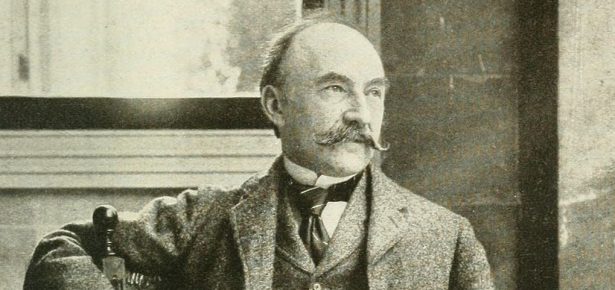
My love affair with The Woodlanders began many years ago when I covered much of the groundwork for a scholarly edition while doing my MA —entitled “Materials for an edition of Thomas Hardy’s The Woodlanders”. Much of the enjoyment for me as a textual editor is to see the development of a work and in the case of The Woodlanders there is a wealth of material that not only illuminates its early genesis but also shows the way that Hardy developed the novel through a number of printed versions. I was consequently delighted at the prospect of editing the text as part of the CUP edition of the novels and stories of Thomas Hardy, which would afford me the opportunity not only to present the text as its first readers would have experienced it, but also to show this development in full detail, so that the inquiring modern reader can see Hardy’s art in shaping his plot, character and setting.
My starting point for the project was facilitated by my earlier experience. I needed to spend no time unravelling the novel’s textual history, and establishing the significant editions and their relationships. I had already done a deal of collation and had even collected a number of the significant texts. Obtaining the texts that I was missing proved relatively easy thanks to the Internet; the one text that proved a little difficult was that of the American serialisation in Harper’s Bazar, but that was resolved eventually through a useful website and a microfilm in my local university library. The major difference between my early editorial work and the present is how editorial theory has evolved. We are no longer in the era of the so-called New Bibliography, with eclectic texts centred on establishing the author’s final intentions.
The holograph manuscript is the first extant stage in the novel’s genesis; it is complete, coherent and generally adequately punctuated, if lacking the author’s final polish. It is the direct ancestor of all printed forms of the novel, but contains many inconsistencies that are due to it having been written piecemeal as printer’s copy for serialisation in Macmillan’s Magazine. There are also instances where the writing is tentative in nature, and others where alternative passages are offered (in one of which, the song on f. 104, we are not actually given the text as Hardy wished it for the book form). There is also the matter of approximately one-fifth of the manuscript’s writing being in the hand of Emma Hardy, which carries potential for textual unevenness as well as error.
As well as the extant holograph manuscript, the novel took shape through serialisation in two magazine versions, followed by publication in English (Macmillan, three volumes) and American (Harper, one volume) first editions, a colonial edition, a one volume second edition, a first collected edition (Osgood, McIlvaine), and the Wessex edition (Macmillan); for the last of which the printer’s copy prepared by Hardy is extant. The relationship between these versions of the text does not become neatly linear until after the second edition, and at each stage there are revisions by Hardy not only to substantives but also to accidentals (which is evidenced by the printer’s copy for the Wessex edition which shows Hardy eliminating over 460 commas and making alterations to most other forms of styling).
In addition to a constant search for the bon mot, there are several underlying trends to Hardy’s many substantive revisions. These include: catering, in his preparation of the novel’s serialisation, for the perceived prudish and moralistic tastes of the magazine reading public; countering the effects of that influence on the text whilst preparing volume editions, particularly by making the sexual element more explicit; responding to the observations of critics; aligning the topography of the novel with his wider concept of Wessex (or in some cases to make identification of places more difficult); making subtle adjustments to characterisation and relationships.
I have joked that I have spent far more time on The Woodlanders than its author, but reading the novel word for word innumerable times was never a chore.
Latest Comments
Have your say!